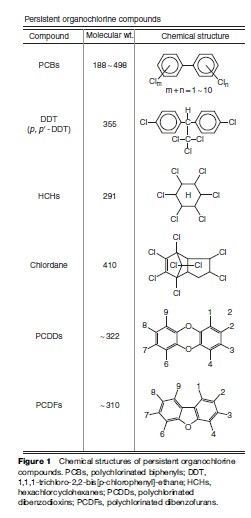What Are Organohalogens?
It is axiomatic that human activities change the quality of the environment on a global scale, which can adversely affect life on earth. A prototypical example of such environmental damage and harmful biological effects is that caused by persistent human-made chemicals, particularly organohalogen compounds. Organohalogens are organic compounds that contain chlorine, bromine, fluorine atoms, and the molecules are named chlorinated, brominated, and fluorinated compounds, respectively (Figures 1, 2 and 3). Due to their extreme persistence in the environment, bioaccumulative nature, and long-term health effects in humans, some of these organohalogen compounds such as polychlorinated biphenyls (PCBs, an industrially versatile compound), insecticides such as DDTs, HCHs (BHC), chlordane (CHLs), and industrial byproducts such as chlorinated/brominated dioxins/ dibenzofurans are well-known global environmental contaminants. Although the use of these synthetic chemicals was banned or severely restricted in most developed countries more than three decades ago, they are still found in every component of the global ecosystem and pose a threat to life on earth. Following the ban on the production and usage, residue levels of organohalogens declined, in some cases at a slower rate. Nevertheless, new organohalogens continue to be discovered in the environment. Perfluorinated compounds (PFCs) and polybrominated diphenyl ethers (PBDEs) are widely used in a variety of industrial and consumer products that are considered emerging persistent global environmental pollutants. The historical background of the organohalogens, their physicochemical properties, environmental contamination, human exposure, and effects on human health are described in this research paper with particular focus on chlorinated, brominated, and fluorinated compounds.
